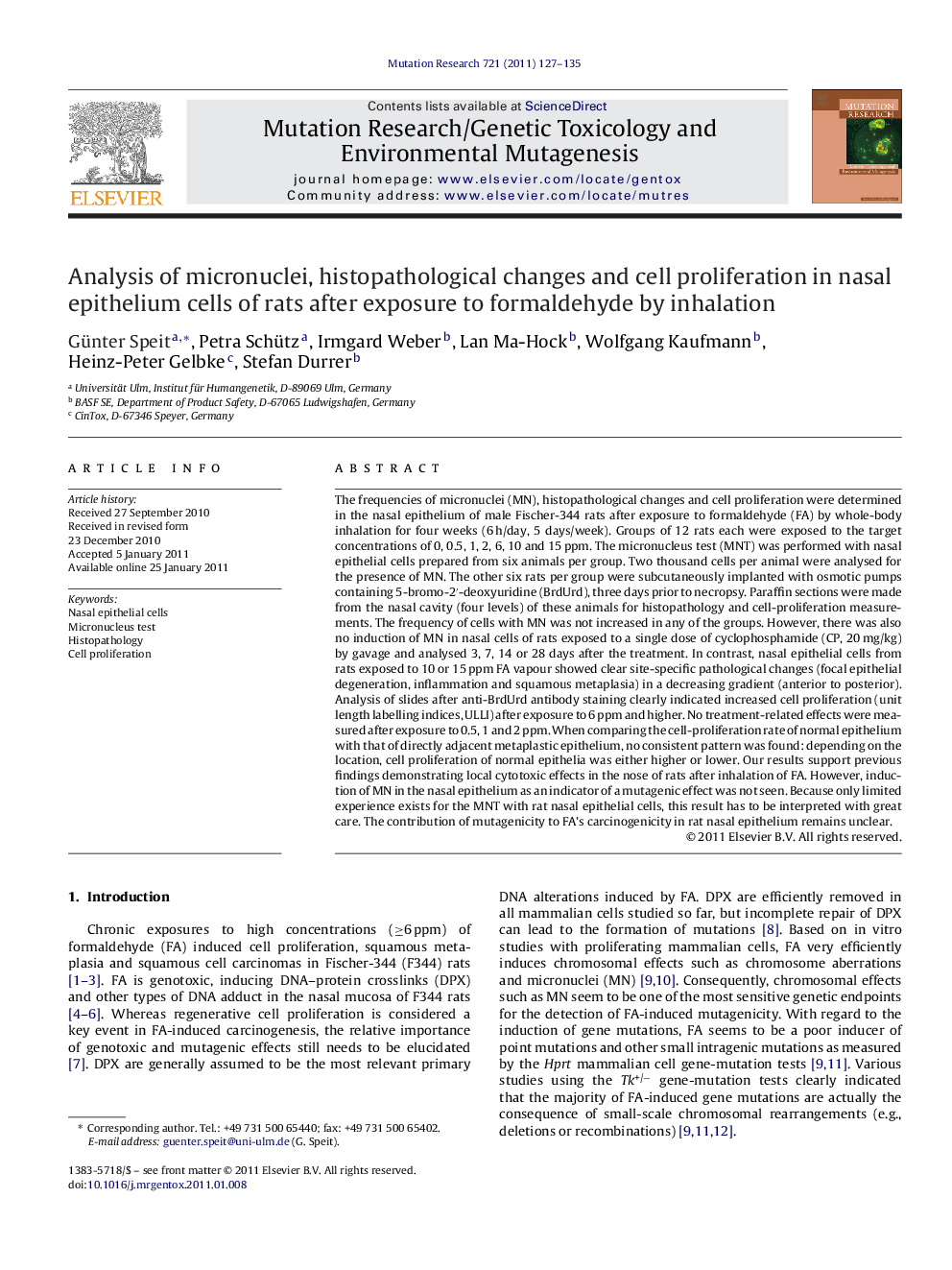| Article ID | Journal | Published Year | Pages | File Type |
|---|---|---|---|---|
| 2148358 | Mutation Research/Genetic Toxicology and Environmental Mutagenesis | 2011 | 9 Pages |
Abstract
The frequencies of micronuclei (MN), histopathological changes and cell proliferation were determined in the nasal epithelium of male Fischer-344 rats after exposure to formaldehyde (FA) by whole-body inhalation for four weeks (6Â h/day, 5 days/week). Groups of 12 rats each were exposed to the target concentrations of 0, 0.5, 1, 2, 6, 10 and 15Â ppm. The micronucleus test (MNT) was performed with nasal epithelial cells prepared from six animals per group. Two thousand cells per animal were analysed for the presence of MN. The other six rats per group were subcutaneously implanted with osmotic pumps containing 5-bromo-2â²-deoxyuridine (BrdUrd), three days prior to necropsy. Paraffin sections were made from the nasal cavity (four levels) of these animals for histopathology and cell-proliferation measurements. The frequency of cells with MN was not increased in any of the groups. However, there was also no induction of MN in nasal cells of rats exposed to a single dose of cyclophosphamide (CP, 20Â mg/kg) by gavage and analysed 3, 7, 14 or 28 days after the treatment. In contrast, nasal epithelial cells from rats exposed to 10 or 15Â ppm FA vapour showed clear site-specific pathological changes (focal epithelial degeneration, inflammation and squamous metaplasia) in a decreasing gradient (anterior to posterior). Analysis of slides after anti-BrdUrd antibody staining clearly indicated increased cell proliferation (unit length labelling indices, ULLI) after exposure to 6Â ppm and higher. No treatment-related effects were measured after exposure to 0.5, 1 and 2Â ppm. When comparing the cell-proliferation rate of normal epithelium with that of directly adjacent metaplastic epithelium, no consistent pattern was found: depending on the location, cell proliferation of normal epithelia was either higher or lower. Our results support previous findings demonstrating local cytotoxic effects in the nose of rats after inhalation of FA. However, induction of MN in the nasal epithelium as an indicator of a mutagenic effect was not seen. Because only limited experience exists for the MNT with rat nasal epithelial cells, this result has to be interpreted with great care. The contribution of mutagenicity to FA's carcinogenicity in rat nasal epithelium remains unclear.
Related Topics
Life Sciences
Biochemistry, Genetics and Molecular Biology
Cancer Research
Authors
Günter Speit, Petra Schütz, Irmgard Weber, Lan Ma-Hock, Wolfgang Kaufmann, Heinz-Peter Gelbke, Stefan Durrer,
